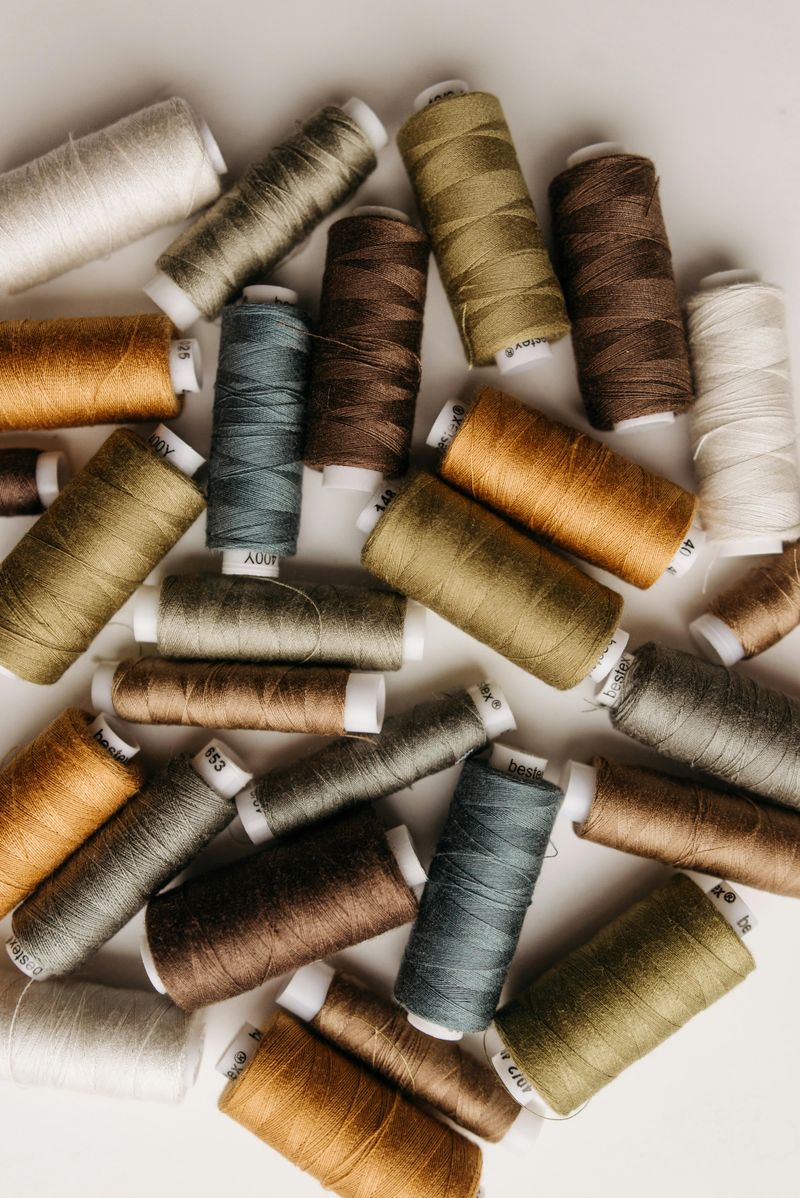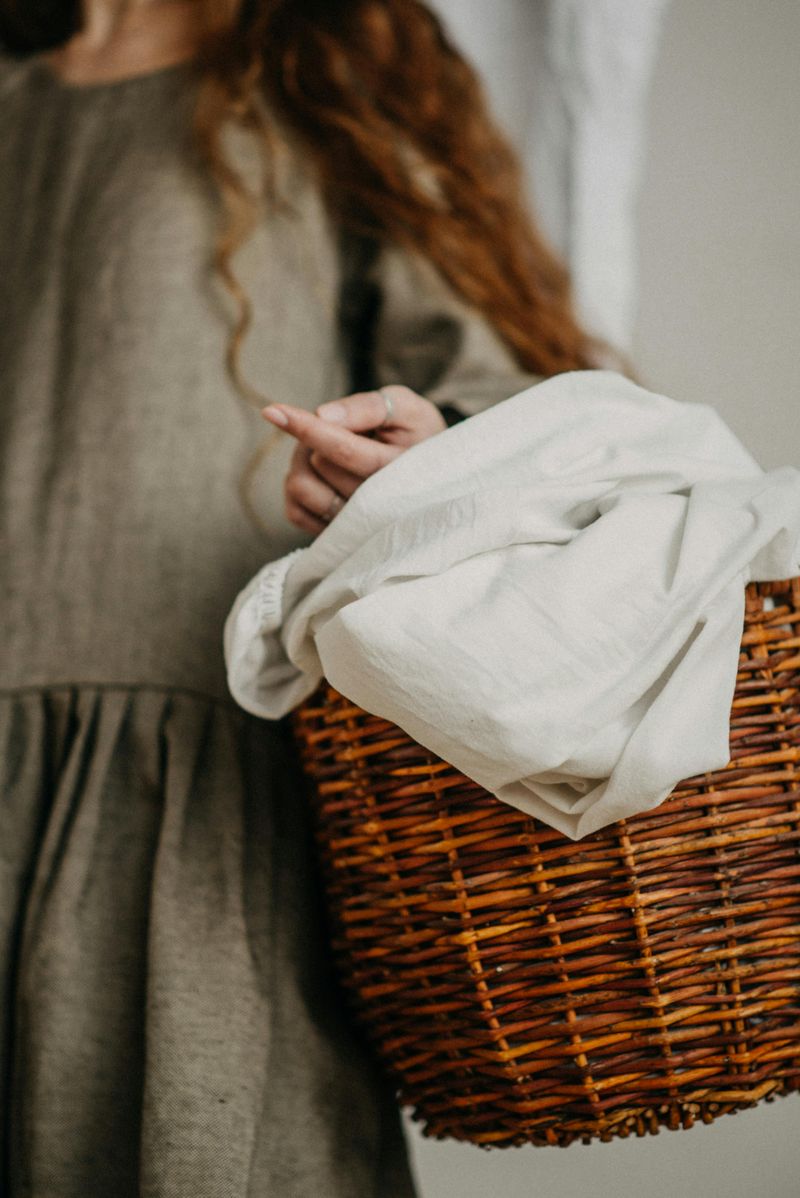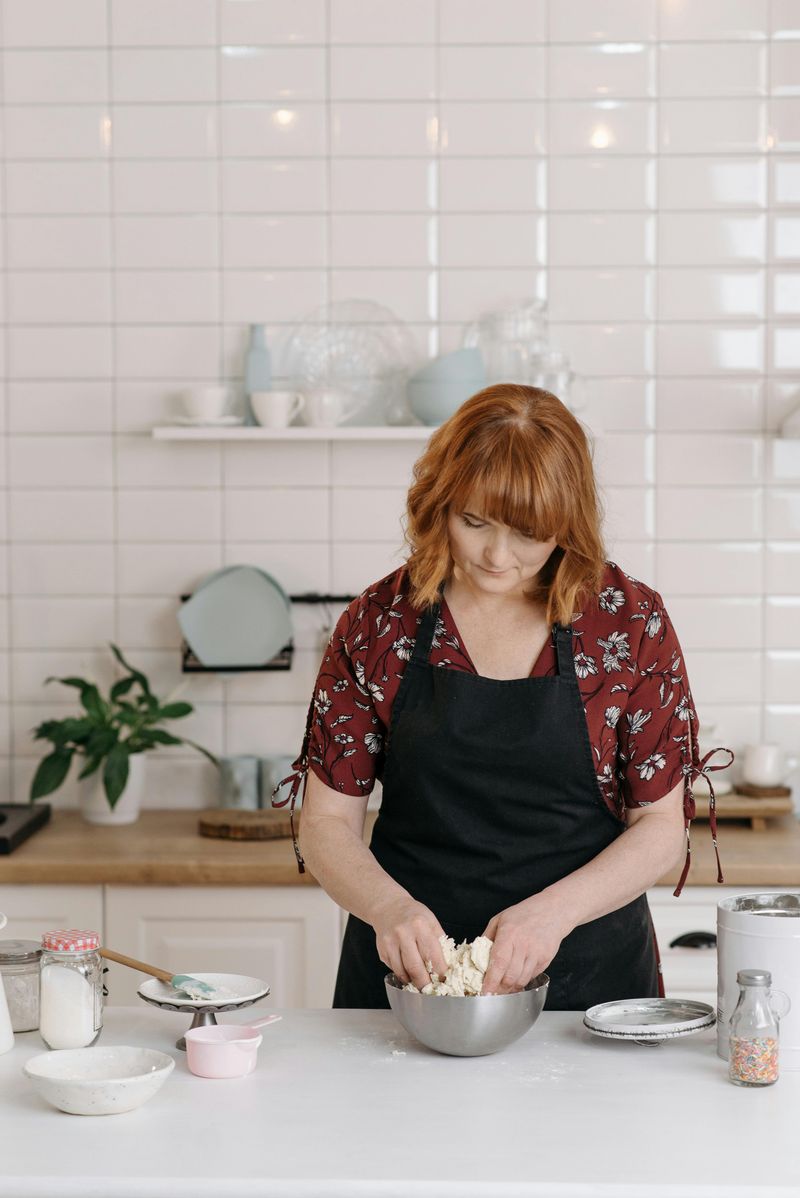The 1940s marked a pivotal era for women as World War II reshaped traditional roles and responsibilities. While Rosie the Riveter symbolized newfound workplace opportunities, everyday life for women still followed strict social codes that might seem foreign to modern eyes. Let’s peek behind the curtain of time to discover fascinating daily habits that were once commonplace but have largely disappeared from our modern routines.
1. Making Clothes From Scratch

Sewing machines hummed in nearly every 1940s household as women crafted wardrobes from bolts of fabric and paper patterns. With rationing in full swing during the war, turning old curtains into smart frocks wasn’t just thrifty; it was patriotic!
I’m always amazed by my grandmother’s stories of creating entire seasonal wardrobes with nothing more than a Singer machine and determination. The ability to whip up a dress for Friday’s dance was simply expected, not celebrated as the rare crafting achievement it would be today.
2. Victory Gardening

Perfectly manicured nails? Not for the wartime woman! Hands plunged into soil as ladies across the nation grew approximately 40% of America’s vegetables in backyards and community plots. These ‘Victory Gardens’ weren’t merely hobbies; they were crucial contributions to the war effort.
Imagine spending your evenings preserving mountains of tomatoes and beans after a full day’s work! My great-aunt recalled how neighborhood women would swap seedlings and preserving tips like precious currency, creating community bonds through shared harvests.
3. Stocking Seam Drawing

When nylon stockings disappeared into the war effort, crafty ladies reached for eyebrow pencils! With bare legs considered scandalous, women would draw perfect straight lines down the backs of their legs, mimicking stocking seams with remarkable precision.
The process was delightfully cheeky; often requiring a friend’s help to ensure the lines were ruler-straight. Some even used tea to create a faux tan before applying the pencil. What dedication to fashion! This morning ritual required steady hands and patience we can barely fathom in our grab-and-go culture.
4. Setting Hair With Uncomfortable Overnight Curlers

Beauty sleep? More like beauty suffering! The 1940s woman endured metal cage rollers, pin curls secured with bobby pins, or rags tied into hair before bed. Just imagine trying to find a comfortable sleeping position with your head covered in metal contraptions!
Unlike today’s five-minute styling wands, creating those perfect victory rolls or pageboy curls was an overnight commitment. My grandmother laughed about how young ladies would chat on the phone with their beaus while secretly balanced on pillows arranged to protect their curl-in-progress coiffures.
5. Weekly Laundry Day Marathons

Monday was universally dreaded as laundry day; a proper all-day affair involving copper tubs, washboards, and serious elbow grease! Without automatic washing machines, women would sort, soak, scrub, rinse, wring, and hang each family garment by hand.
The physical toll was extraordinary. My mother recalls her mum’s red, chapped hands as a permanent feature. After washing came the pressing; heating heavy flat irons on the stove and methodically working through piles of wrinkled clothes. No wonder vintage photographs show such crisply pressed frocks; they represented hours of dedicated labor!
6. Mending Everything Repeatedly

“Make do and mend” wasn’t just a catchy slogan; it was daily reality. Women expertly patched, darned, and repurposed everything from socks to sheets until items were quite literally falling apart at the seams.
The darning mushroom was every housewife’s essential tool, used to repair tiny holes before they became gaping problems. Clothing might be turned inside-out, resewn, or completely transformed when worn beyond repair. My grandmother’s legendary skills included invisible darning so perfect you’d never spot the mend unless she pointed it out.
7. Formal Glove Etiquette

Gloves weren’t merely accessories; they were social requirements governed by complex rules. A properly dressed woman wouldn’t dream of leaving home bare-handed, carrying different pairs for various occasions and times of day.
The protocol was mind-bogglingly detailed! Gloves stayed on when shaking hands but came off for eating (though not drinking tea). White gloves required constant cleaning to maintain pristine appearance. My grandmother kept a drawer dedicated solely to different glove styles; wrist-length for daytime, opera-length for evening, leather for driving.
8. Hand-Writing Multiple Letters Weekly

Long before text messages, women maintained social connections through dedicated correspondence routines. Many set aside specific afternoons for letter writing, penning multiple missives to distant family, friends, and especially servicemen overseas.
These weren’t hasty notes but carefully crafted communications on proper stationery. My mother’s cedar chest contains bundles of wartime letters from her parents; each four to five pages long, filled with neighborhood news and everyday details we’d never think to share today.
Imagine the anticipation of waiting weeks for replies! The mailman’s arrival was a genuine event, not just another notification ping.
9. Preparing Every Family Meal From Basic Ingredients

Before frozen dinners and meal delivery apps, women spent hours daily transforming basic ingredients into family meals. The kitchen was command central where everything from bread to desserts was made by hand, often using recipes memorized or passed down through generations.
Convenience foods were rare luxuries. A typical 1940s housewife might begin her morning by baking bread, then plan elaborate multi-course dinners using whatever was available during rationing. Cooking skills were considered essential feminine knowledge, taught from mother to daughter.
Modern kitchens with microwaves, food processors, and instant pots would have seemed like science fiction to these women who mastered the art of creating nourishing meals with limited resources and basic tools.